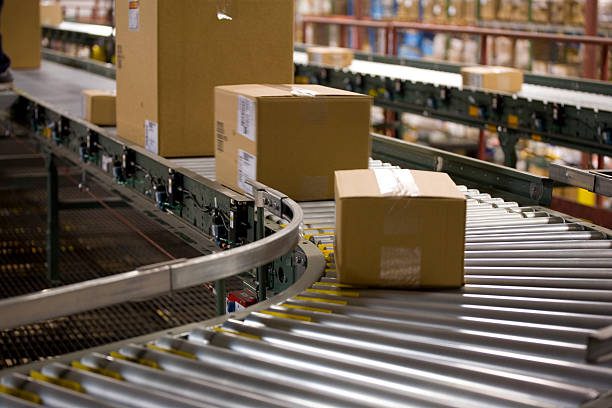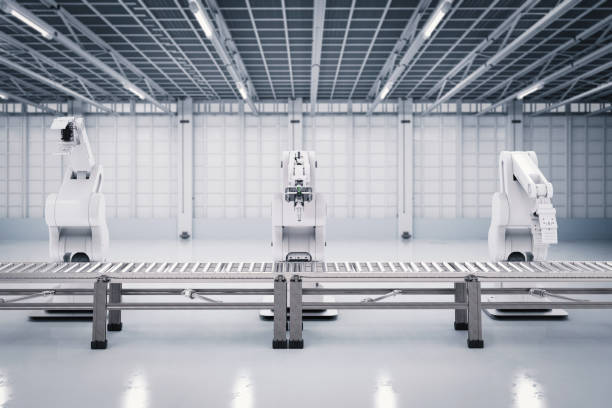Initially, conveyor belts were used in outdoor activities and production processes, such as being used in mines. However, technological changes have led to the increased use of conveyor belts indoors, especially for manufacturing facilities. These facilities use conveyor belts for various activities and moving different types of goods. There are different types of conveyor belt manufacturing facilities to meet production needs. They vary due to the size and number of goods they can carry, the distance, and the purpose.
A conveyor belt is essential for the manufacturing business in various ways. This explains why most companies and packaging enterprises prefer to have conveyor belts around manufacturing facilities or warehouses. The popularity of conveyor belts is rising fast due to the anticipated benefits and the increased dependability to boost manufacturing.
Space-saving
Conveyor belts are essential for the manufacturing process due to their space-saving techniques. You can quickly locate them in a higher area on the manufacturing floor. This leaves space below where you can locate other machines, hence saving the space you need for the production process. Imagine using forklifts or manual labor to move the products around; you will likely have an overcrowded factory floor with an increased accident rate, insurance rate payments, and poor working conditions and environments. You need to save on the space floor to reduce the factory size you need. By reducing the space required, you also minimize the cost of other utilities.
In companies such as e-commerce, where the fulfillment centers have to be large, the belt conveyors can be located in higher areas, leaving spaces below for employees to pack the goods delivered by belts to the packing stations. It also leaves space for other machines, such as robots, to operate or move goods below. With such modifications, you can include as many machines as possible hence automating the process and limiting the overreliance on human labor.
Impact on cost-saving
Manufacturing businesses need to save on costs to reduce the costs of their produced goods. This strategy is critical for retaining the current customers and attracting new ones. Conveyor belts can affect prices such as eliminating some labor expenses. In extensive manufacturing facilities, goods may move over long distances, increasing manufacturing costs, primarily when relying on specific machinery or human labor to move the goods. The belts can move goods consistently over long distances without monitoring, saving costs.
They can also be necessary for other needs, such as warehouse organizing. Conveyor belts can move all types of goods; however, they limit the maximum capacity, weight, and size of goods to move. They are suitable for line manufacturing processes and activities. Line manufacturing refers to the stage manufacturing processes where a product has to move for long-distance across the manufacturing floor to different manufacturing stages.
The belts can move the goods simultaneously to different production stages until the final state when the manufacturing is complete. This process enables the company to eliminate costs such as labor to push and move the product around the manufacturing floor until the production process is finally complete.
Elimination of delays
Various factors can lead to delays in the manufacturing process. The delays can result from the slow movement of goods, causing delays within the different production stages. The belts facilitate the continuous movement of goods throughout different production stages, eliminating the delays and any hurdles caused by other types of labor.
The size of the goods can also cause delays, especially if you are dealing with many small size goods. When delivered by hand, the goods can cause clutter on the factory floor due to the numbers. The belts can move smaller goods to various destinations, hence reducing ground clutter. This clutter can cause delays by limiting the motion and movement of items on factory floors. Eliminating the clutter also prevents potential accidents that can affect the manufacturing process.
They also eliminate delays by saving production time. Instead of carrying goods across the factory floor, you will transport the goods easily and quickly, limiting the production process delays. They also facilitate the continuous movement of goods. Relying on human labor to move goods through production stages can cause delays due to the need for breaks, fatigue, and accidents. The belts do not experience any of these challenges. This enables the staff to focus on other activities, hence boosting the manufacturing process.
Saving energy
The production and manufacturing process is highly affected by the energy implications. Saving energy is critical for the manufacturing process, hence using energy-efficient production processes. The energy-efficient process relies on technologies such as conveyor belts to save human labor and energy used in the production process.
The conveyor belts are also becoming more energy-efficient and use smoother technologies, reducing energy costs to operate the belts. The belts do not require cooling; hence you save on cooling costs which can sometimes be energy-intensive.
Conclusion
The conveyor belts have one main advantage to the manufacturing process: the impact on profits. Businesses relying on conveyor belts for manufacturing will save on energy costs, eliminate delays, save on space and eliminate other costs. By eliminating these costs, you reduce the product price, attract more customers, and retain loyal customers, increasing profits.




































